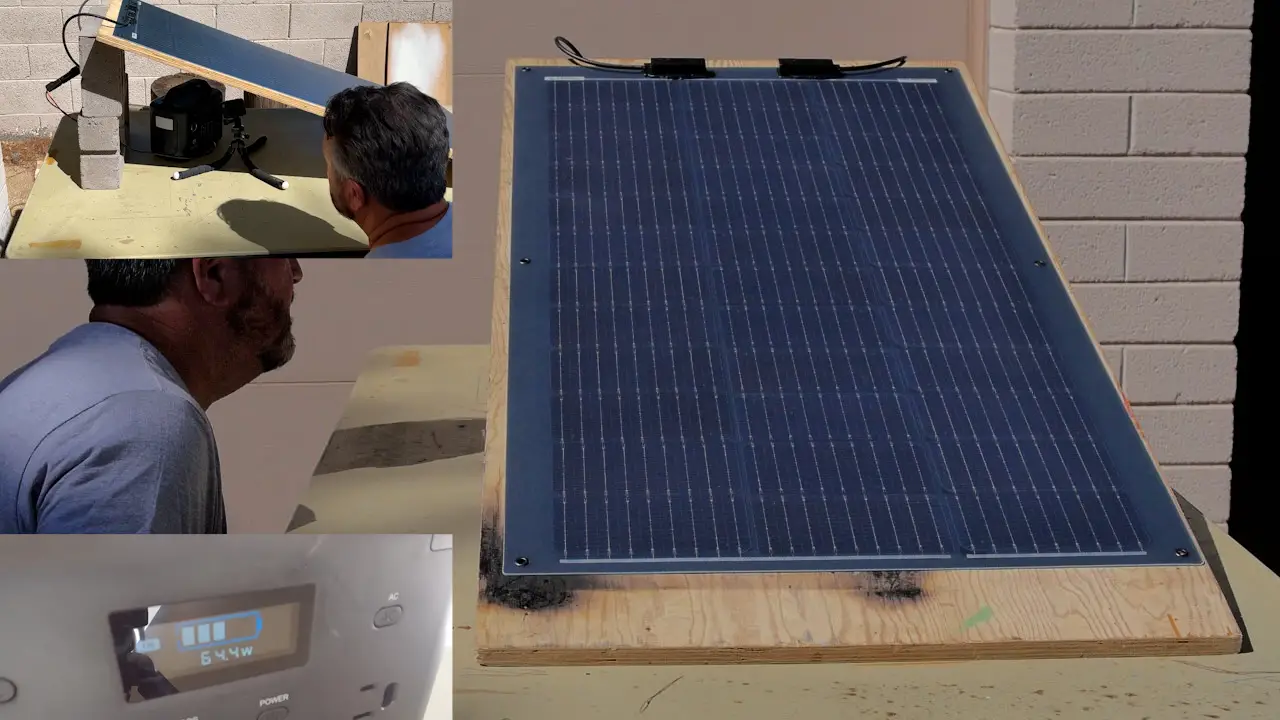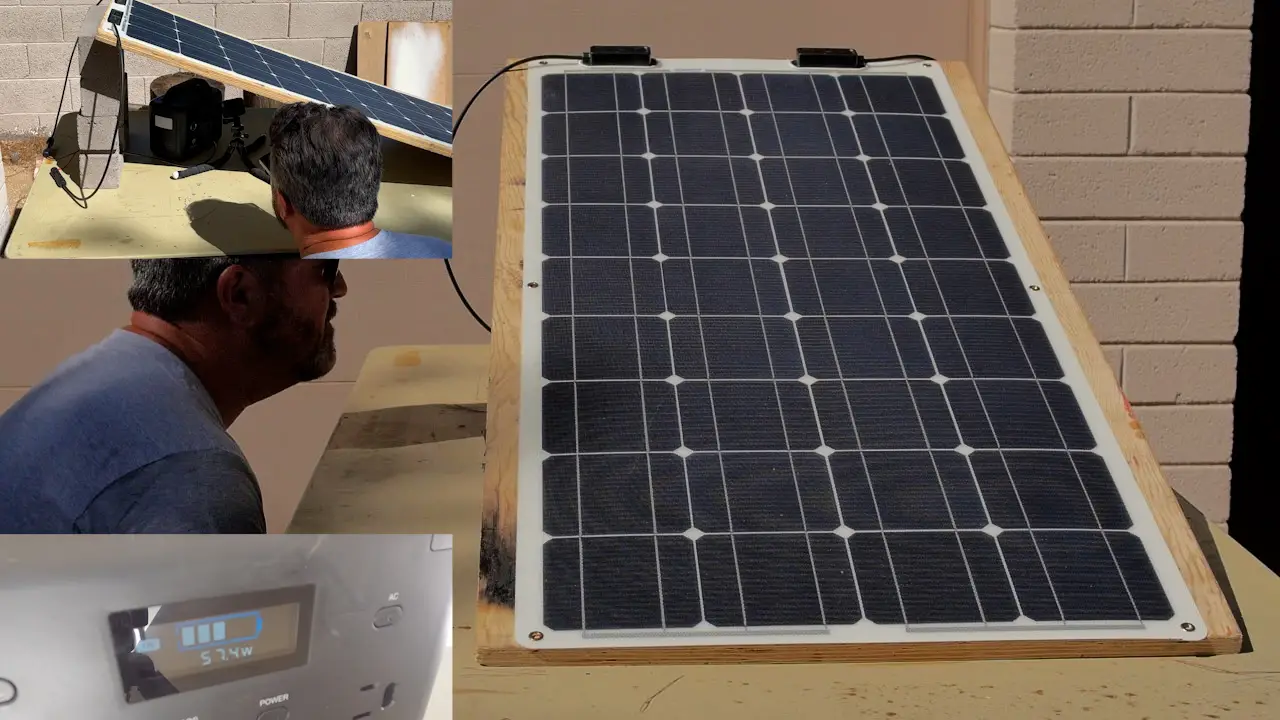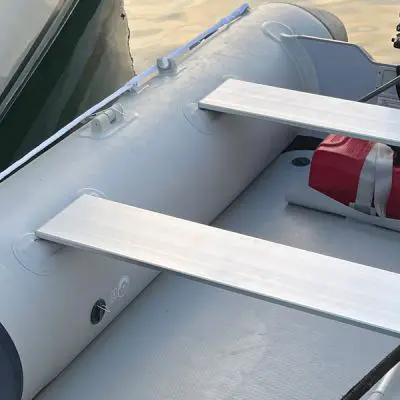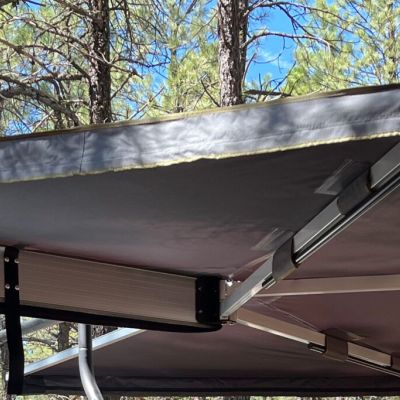Flexible Solar Panels: Which Perform Best?

When it comes to solar panels, there are two main types available in the market: rigid solar panels and flexible solar panels. Rigid panels are built with a solid frame that can withstand harsher conditions for longer. Flexible solar panels, on the other hand, are made up of thin-film solar cells that are coated on a flexible material. This thinner, flexible design equals a lightweight and portable panel ideal for outdoor recreation applications such as RVs, boats, and for camping.
We recently added 400 watts of solar panels to the canvas bimini cover of our 46ft sailboat. To find the best flexible solar panel for our project, we purchased three flexible panel models and tested them in identical conditions to see which performed best.
The Candidates
Our search for the best flexible solar panel started by identifying three top-selling flexible panels available on Amazon. We chose a model from Topsolar as well as two different models (white and black) produced by Renogy. Each panel was rated at 100w of power production.
Topsolar is a brand we’ve started to see more of on the market. Their panels have solid reviews and are some of the least expensive options available. It was important for us to compare Topsolar’s panel to the more mid-market offerings from Renogy to consider which panel is the best value.
We’ve highlighted Renogy’s 200Ah LiFePo4 Battery and Battery Monitor in the past here at Outward Spaces. Renogy doesn’t pay us to review their products – we just have genuinely had great experiences with their line of quality and affordable off-grid gear. If you chose to buy Renogy’s solar products, make sure to use coupon code “RenogySolar10” to save 10% off of your purchase.
The Flexible Solar Panels We Tested






The Unboxing

All three of our flexible solar panels arrived in similar packaging – in a slim rectangular box with branding and model numbers printed on them. Each was packed with styrofoam corner and side protectors to protect the panels from impact during shipping. All panels arrived in perfect condition – without any damage from the shipping process.

As expected, each panel was of a similar size. The Topsolar panel was the skinniest at only 16.5 inches wide and the white Renogy panel was the longest at 48 inches long. All were of similar thickness – around .1 of an inch. All three panels came with a textured surface on the top of the panels. This textured surface reduces the reflection of light whilst maximizing the absorption of light from every possible angle. This ensures high performance in low light or cloudy conditions, or when the light falls at an angle (in the morning, evening, or winter).
Interestingly, the Topsolar panel has a single junction box in the top middle of the panel while both Renogy panels have two separate junction boxes for positive and negative connections. All connections on these panels came with MC4 connectors and around 18 inches of cable between the junction box and the MC4 ends.
Each panel included 6 grommets (1 in each corner and 2 in the middle/sides) for mounting. We liked the look of the black Renogy panel the best. The black panel is slick and more cohesive looking in our opinion – though we do have some concerns that the all-black panel may attract more heat than the white panels.
The Test

To put the panels to the test, we decided to test each panel under identical conditions to see which one produced the most wattage. To do this, we set up a scrap piece of plywood propped to a 20-degree angle and pointed toward the sun. We used our Golabs i200 Portable Power Station with it’s included MC4 solar connectors to receive the charging input of each panel. The i200 includes a wattage readout on its display that measures both incoming and outgoing wattage into the power station. Without any discharging sources plugged in, we could measure the solar input easily on the i200. We also discharged the i200 to 4 out of 5 bars to ensure its charge controller would charge the device’s battery.
We tested all 3 panels during an early September midday in Phoenix, AZ. While not the peak of summer, the sun was shining bright and provided optimal conditions to compare each panel’s output. The sky was clear without clouds to affect our testing between panel swaps. In our testing, we set each panel on the angled plywood and connected it to the i200. We left each panel connected for enough time (2-3 minutes) for the wattage reading to stabilize – giving us its “peak output” under our testing conditions.
The Results
Panel 1: Topsolar 100 Watt 12V Flexible Monocrystalline Solar Panel – 62.4 watts peak output

Panel 2: Renogy 100 Watt 12 Volt Black Division Lightweight Monocrystalline Solar Panel – 64.4 watts peak output

Panel 3: Renogy 100 Watt 12 Volt Flexible Monocrystalline Solar Panel – 57.4 watts peak output

Conclusion and Our Pick
The panels all produced much less than their rated wattage. Only seeing 57-64 watts from 100-watt solar panels is disheartening. It’s important to remember though that the wattage rating of solar panels is under ideal conditions – perfect sunlight, temperature, and angle. In many ways, the 100-watt rating is a hypothetical rating of what the solar panel “can produce”. In most real-world scenarios, you’ll never see the full-rated wattage from a solar panel. But this is exactly why we wanted to test 3 solar panels before purchasing 4 of them for the solar system installation on our boat. We wanted to purchase the panel that got us the most watts relative to other panels.
With this in mind, the clear winner was the Renogy black panel with 64.4 watts of peak output. As noted above, we liked the looks of the black panel best and were pleasantly surprised to find it performed the best of the three. We also liked it’s size format the best – being somewhere in the middle between the other panels in both length and width. At 5.3 lbs, it is a pound heavier than the other panels, but in our case, these 4 extra pounds created by installing 4 of these was acceptable. We wanted to install the best flexible solar panel – the one that produced the most watts. After our testing, we picked up 3 more of the Renogy black panels and have since installed them on top of our bimini on our sailboat. They are happily producing power to recharge our batteries and hopefully will for years to come.
The Topsolar panel was perhaps the most surprising panel in our testing. Producing 62.4 watts at its peak (just 2 watts less than the top panel), the Topsolar is the most affordable panel. The Topsolar panel produces the most watts per dollar and if you’re on a tight budget, these panels may just be your best bet.
Overall, we were disappointed with the Renogy white panel. Producing a peak output of only 57.4 watts meant it produced 11% less power than the Renogy black panel. We expected the peak output of these panels to vary by a few watts. But a 7-watt difference between 2 panels produced by the same manufacturer was surprising. The Renogy white panel is a bit less expensive than the Renogy black panel, so it may come out in the wash at a cheaper price, but if you’re trying to get the most watts out of a 100-watt flexible panel, stick to the Renogy black panel over the white one.
In our test, we found the Renogy 100 Watt 12 Volt Black Division Lightweight Monocrystalline Solar Panel to be the best flexible solar panel. An all-black panel, it looks great too. Under our testing conditions, it produced 4% more power than the Topsolar panel and 11% more power than the Renogy white panel. While it’s the most expensive panel of the 3 we tested, you won’t be sorry spending a few extra dollars on this panel to maximize your solar output under all conditions.



Get 10% off your purchase of Renogy’s solar products at renogy.com! Use coupon code “RenogySolar10” to save.
Interested in adding a solar system to your RV, van, boat, or off-grid cabin? Check out our guide to Designing a DIY Off Grid Solar System.









Leave a Reply